
Posts Tagged: native bee
Decisions, Decisions! The Katydid or the Bee?
So here's this crab spider stalking a katydid nymph foraging on a Mexican sunflower, Tithonia rotundifola. Dinner awaits! Suddenly a native bee, Melissodes agilis, lands next to the katydid and begins to sip some nectar. Decisions, decisions! Do I want a juice katydid nymph or a tasty...
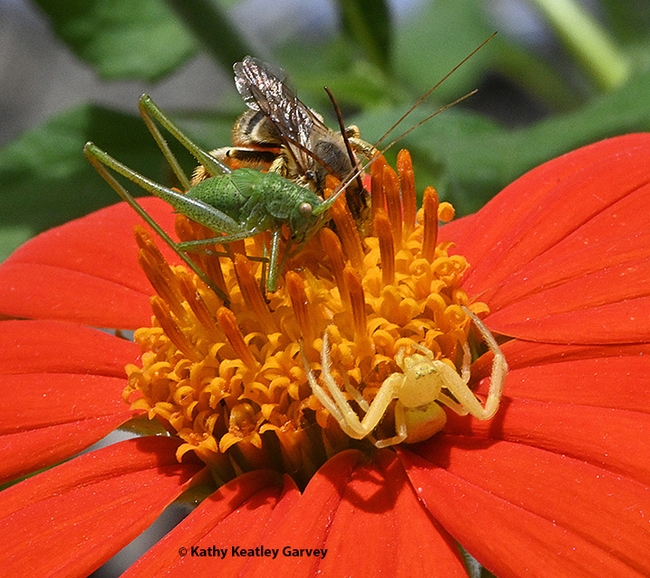
A crab spider is about to nail a katydid nymph when a longhorned bee, Melissodes agilis, appears on the Mexican sunflower. (Photo by Kathy Keatley Garvey)
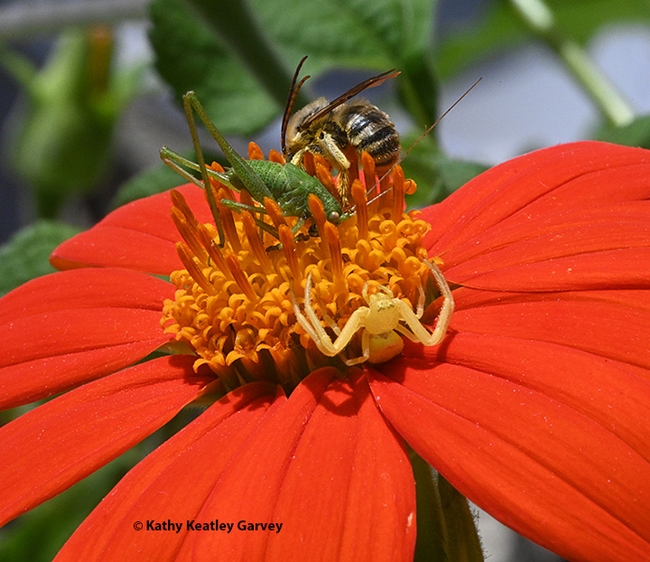
The longhorned bee, Melissodes agilis, continues to forage under the watchful eye of the crab spider. (Photo by Kathy Keatley Garvey)

The longhorned bee turns aways from the crab spider, still unaware of the danger. (Photo by Kathy Keatley Garvey)
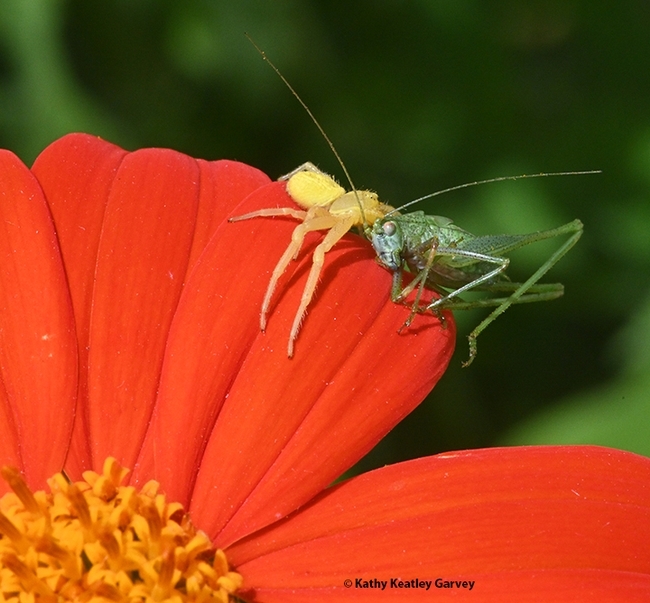
The crab spider hauls the struggling katydid nymph over the side of the Mexican sunflower. (Photo by Kathy Keatley Garvey)
Bumble Bees at Bodega Bay: Seeing Double
What's better than seeing a yellow-faced bumble bee, Bombus vosnesenskii, foraging on an neon pink ice plant at Bodega Bay? Seeing two bumble bees on the same flower. That's what we observed on a recent trip to Doran Regional Park, Bodega Bay, Sonoma County. It was bumble bee heaven....
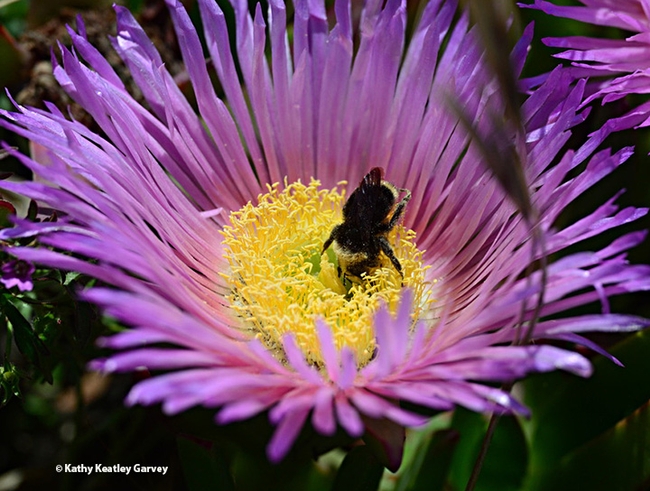
A lone yellow-faced bumble bee, Bombus vosnesenskii, foraging on an ice plant blossom at Bodega Bay. (Photo by Kathy Keatley Garvey)
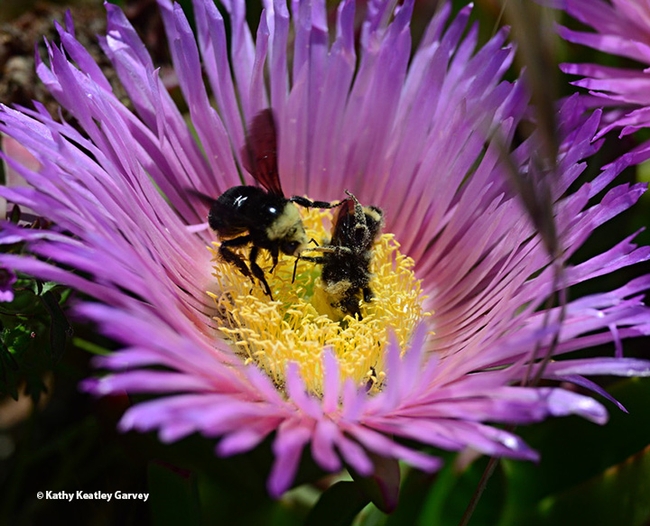
"Hey, move over! I want to forage here, too." Two bumble bees, Bombus vosnesenskii, on one neon ice plant blossom. (Photo by Kathy Keatley Garvey)
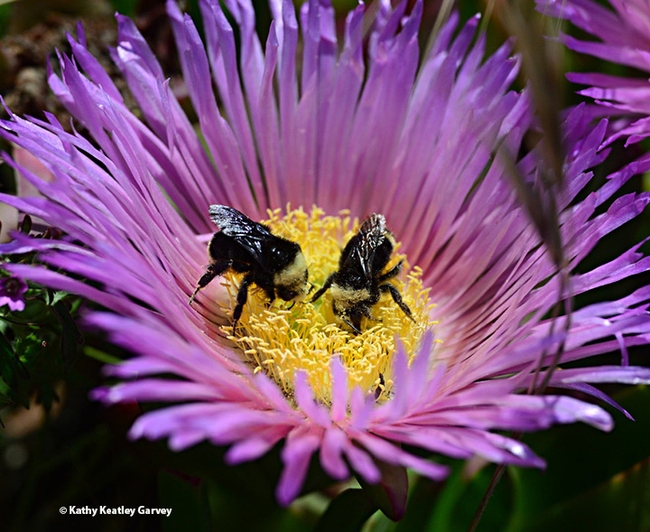
"Let's share this flower." Two bumble bees, Bombus vosnesenskii, foraging on an ice plant blossom. (Photo by Kathy Keatley Garvey)
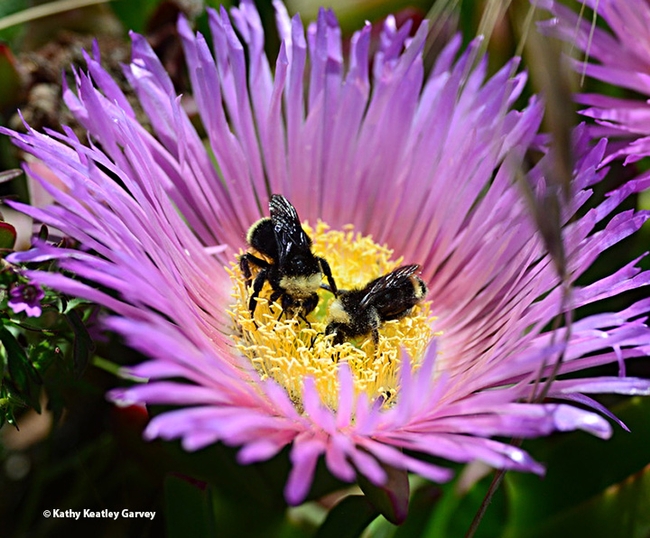
"Hey, you're getting too close to me. I was here first." Two bumble bees, Bombus vosnesenskii, foraging on the same ice plant blossom. (Photo by Kathy Keatley Garvey)
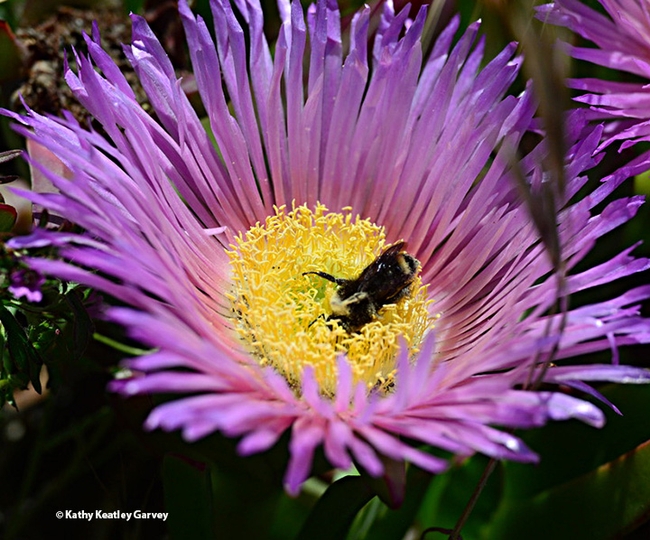
"Ah, all mine again!" A bumble bee, Bombus vosnesenskii, rolling in the pollen of a neon ice plant blossom. (Photo by Kathy Keatley Garvey)
Day 7 of National Pollinator Week: Meet a Sunflower Bee
It's Day 7--the last day--of National Pollinator Week. Meet a longhorned bee, Svastra obliqua expurgata, family Apidae. It's also known as a sunflower bee. "It's a bee that prefers sunflower but will collect pollen from a variety of members of the Aster family," the late...

A female long-horned bee, Svastra obliqua expurgata, foraging on sneezeweed at the UC Davis Arboretum and Public Garden. (Photo by Kathy Keatley Garvey)
Know Your Native Bees: Here's How!
Do you know your native bees? Can you distinguish a sweat bee from a leafcutting bee from a cuckoo bee from a mining bee? No sweat? Or, are you...ahem...sweating the answer? You can learn more about native bees at a special presentation on Saturday, Sept. 17 in the UC Agriculture and...

Female sweat bee, Svastra obliqua expurgate, on purple coneflower, Echinacea purpurea. (Photo by Kathy Keatley Garvey)
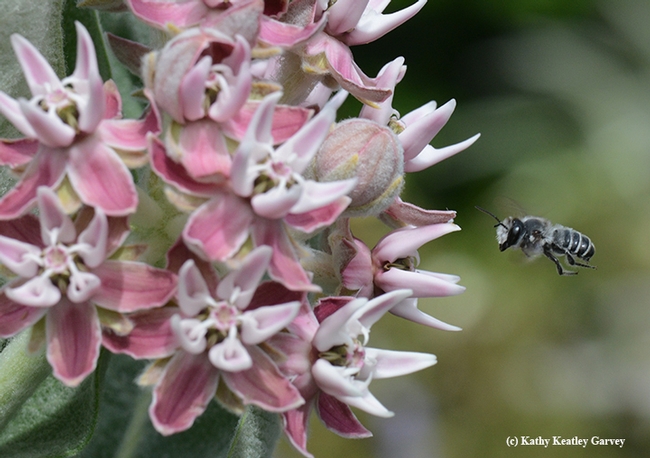
A leafcutter bee, Megachile sp., heading for a broadleaf milkweed, Asclepias speciosa. (Photo by Kathy Keatley Garvey)
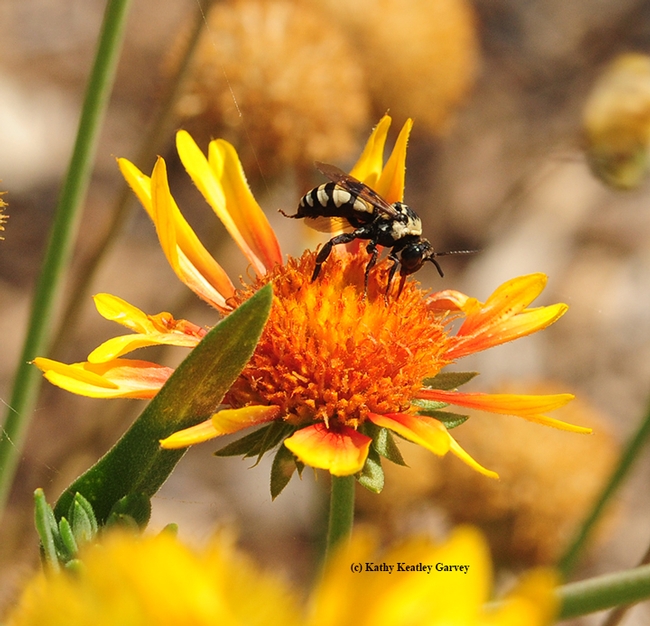
A male cuckoo bee, Triepeolus concavusm, on a blanket flower, Gaillardia. Female cuckoo bees are cleptoparasites; they lay their eggs inside the nests of native bees, including Svastra. (Photo by Kathy Keatley Garvey)
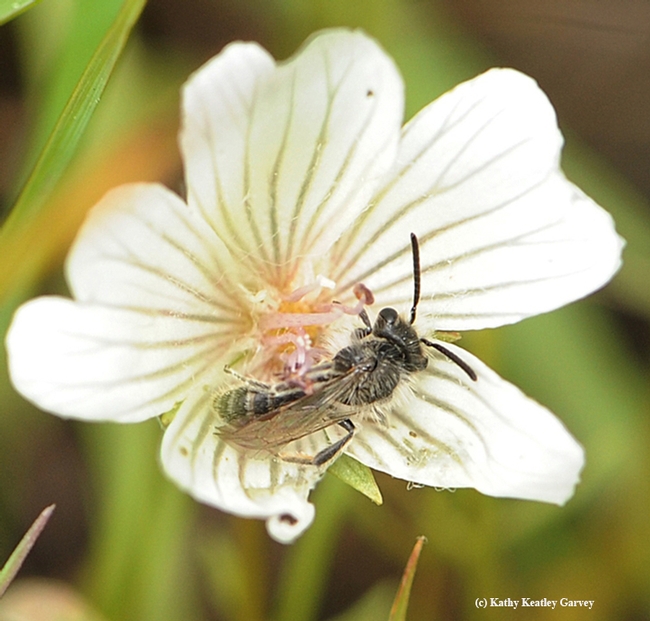
Andrena (mining) bee on meadowfoam, Limnanthes. (Photo by Kathy Keatley Garvey)
Not Your Average Garden-Variety Calendar
It's not your average garden variety calendar.It's absolutely bee-utiful. Native bees reign supreme in “Garden Variety Native Bees of North America,” a calendar produced by University of California alumni as a benefit for two non-profit organizations. The perpetual calendar, the work of native...
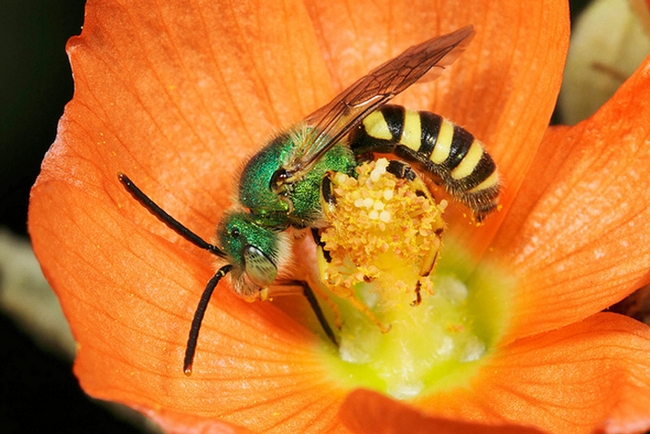
This is one of Rollin Coville's stunning photos of a male green sweat bee, Agapostemon. (Photo by Rollin Coville, used with permission),
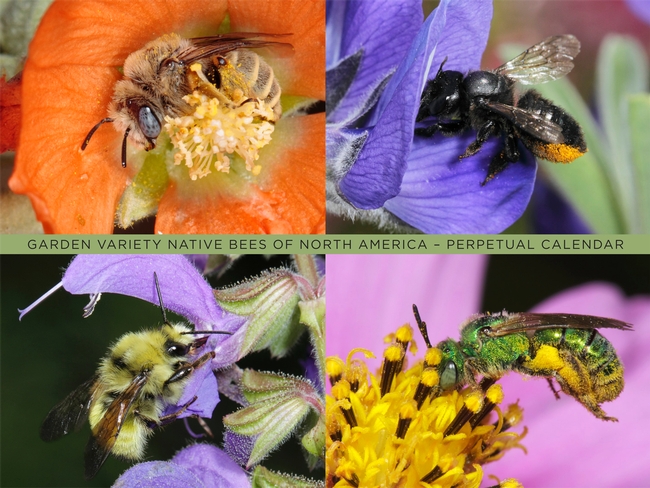
The cover of the calendar, "Garden Variety Native Bees of North America." (Photos by Rollin Coville)
